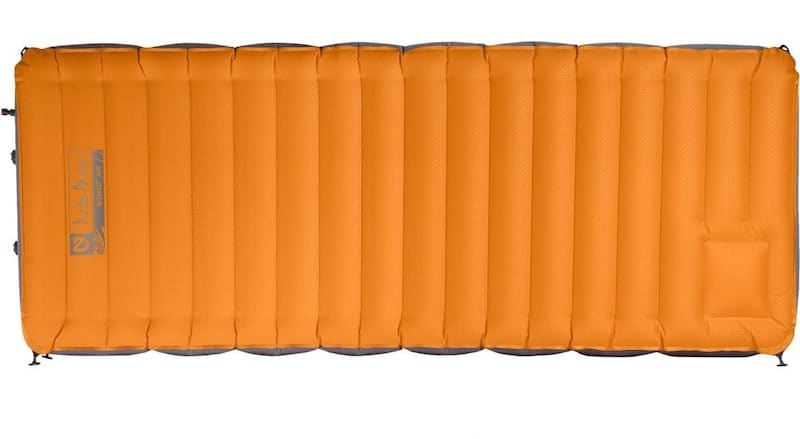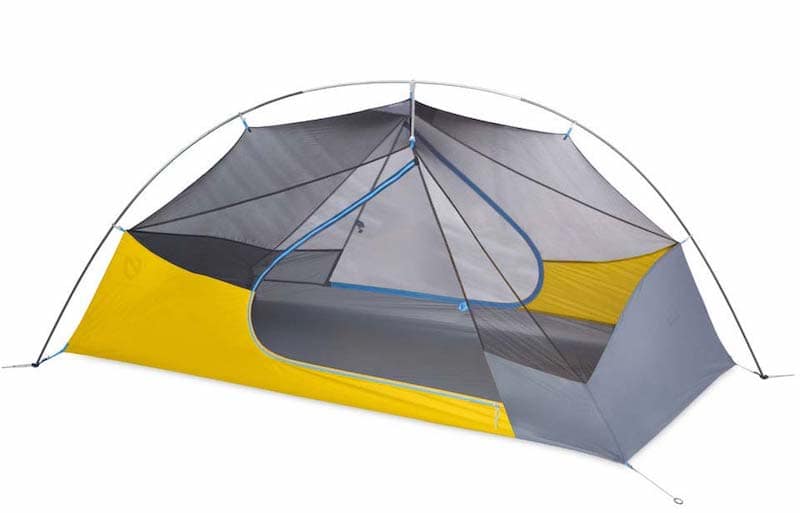In advance of a recent climbing trip to Europe, I needed a tent. Between clothing, a rope and a full rack of climbing gear, my duffel bag was already approaching the draconian 50-pound limit enforced by airlines—unless you’re one of those annoying upgraded status people. I wanted a tent that weighed next to nothing, as I would certainly not be bringing any less climbing gear.
I looked to a brand that I have long considered to be one of the most innovative companies in the outdoor industry: Nemo. Ever since this small New England-based company hit the market with a tent design sporting inflatable poles, it has grown and matured, yet continued to push that edge of innovation and craftsmanship.
I needed a good sleeping pad, too. Here, weight was also a consideration, but I didn’t want to go so light that I’d compromise my recovery/sleep. Believe me, my 23-year-old self would have heartily mocked my current self as a feeble and soft loser. Alas, one ages … in this case, unapologetically. In the opinion of this mid-30s climber, inch-thick air mattresses don’t cut it anymore. If I have aspirations of climbing relatively hard, then I know that high-quality sleep is no more of a luxury than nutrient-dense food and water.
After a bit of research, I chose one of their lightest two-person tents, the Blaze 2P Ultralight Backpacking tent. Then I chose one of their heaviest/thickest sleeping pads, the Nomad 30 XL sleeping mattress. My priorities for comfort and shelter were reflected in the respective packed weights of the Blaze tent (2 lbs 5 oz), which actually weighed less than the Nomad pad (2 lbs 15 oz).
Blaze 2P Ultralight Tent
A relatively roomy two-person tent at just over two pounds? I couldn’t believe my eyes when I first read that weight. It seemed too good to be true.

It wasn’t until I actually received the tent and tried to put it together that I finally understood how that lightness was achieved. The Blaze 2P is nota freestanding tent. It uses just one collapsable tent pole. Coupled with taught countersunk tent stakes at all four corners, the single pole provides the rigidity required for the tent to stand upright.
Well, that’s different, I thought. I was cautious to keep an open mind to this minimalistic architecture. Yet I was also worried that my tent could be brought down by a stiff fart.
Once erected, though, the Blaze inspired a lot more confidence. It took me about five or 10 minutes to figure out how to set up the whole thing.
One of the things I appreciate most about Nemo as a company is their attention to details. There are a number of little things about this tent’s design that I appreciated, from the way the pole clipped into the tent via a secure “Intersection Hub,” to the ball and socket joints where the pole connects to the tent’s corners, even to the stakes that drive into dirt easily and securely.
The Blaze 2P has two doors, and two vestibule areas with around 22 inches of room to leave shoes or duffel bags.
I’ve camped in this rig everywhere from Europe to the Utah desert. For being a minimalistic two-pound kit, the Blaze 2P is by far the roomiest, nicest tent shelter in this weight class that I’ve ever slept in.
There are a number situations that may limit this tent’s use, however. I wouldn’t recommend it for cold-weather camping, for example. And in places like Utah, “cold-weather camping” could easily mean year round due to how temps can drop in the desert. I endured some of the coldest and most uncomfortable nights of my life this fall in Utah when the wind picked up and whipped underneath the vestibule, right into the tent. It felt as if I were in an open-bivy situation.
As the Blaze 2P is non-freestanding, another thing to consider is camping in spots where there aren’t adequate options for stakes, such as on desert slick rock or in loose sand. I did test this tent right on loose, beach-style sand and the stakes did a relatively decent job being deadman anchors, although they did come loose after the second night out. Not a huge deal. I just readjusted them and weighted them down with rocks. But it begs the question, when is light too light? For an extra pound, I could’ve gone with the Nemo Dagger 2P, which is a freestanding tent and thereby eliminates some of these concerns.

Nomad 30 XL pad
At a whopping six inches thick once inflated, the Nomad is an amazing and beautiful thing upon which I happily spent a number of nights dreaming about beta and projects. The size, loft, and softness of this pad was more comfortable than any air mattress I’ve slept on. The Nomad 30 rivals the Thermarest Dreamtime for comfort—which is impressive considering that the Dreamtime contains a big slab of memory foam. Best of all, it packs down to a quarter of the size of a Dreamtime.
If my Blaze 2P tent was, maybe at times, too skinny, then I also felt that my Nomad 30 XL pad was at times too fat—at least when it came to inflating this behemoth. Getting the pad to assume its turgid, final state sometimes felt like a marathon.
Thankfully there is a built-in foot pump. The foot pump is another brilliant concept by Nemo. It’s essentially a built-in foam lung that “breathes” air into the mattress by way of you compressing the foam lung, which pushes air through a one-way valve, then re-inflates itself. This pump works well enough as advertised. However, I find it much more effective, albeit slightly more strenuous, to operate the pump using my hands, as if I’m doing CPR. This way I can pick up the pad and allow the foam to re-inflate quickly, which sometimes doesn’t happen immediately when you’re using your foot. Also, the two-handed CRP move allowed me to compress the foam lung more completely.
It also helps to have a flat, relatively dust/dirt-free environment to operate the foot pump. This pump doesn’t work very well in a sandy desert wash, for example. In Utah, I was forced to try to inflate the pad inside my Blaze tent—which, I assume, is where most folks inflate their pads in order to avoid getting their pads muddy/sandy/dirty. But because the pad is essentially the same size as the tent’s footprint, and because of the side doors on the Blaze 2P tent, it was a bit awkward to try to operate the pump due to its location at the foot of the mattress.
Of course, you can always just blow into the pad like you would to inflate a balloon. I tried doing this—and I gave up. Five minutes of blowing and the pad still looked sad and limp. This experiment really helped me to appreciate the built-in pump.
There are two dump valves that make it super, super easy to deflate the pad, which is another great feature. Most air mattresses require that you knead and kneel on the pad pushing air out of two tiny holes. Not this one. The Nomad packs up quickly.
There are two versions of this pad—insulated and non-insulated. I tested the non-insulated one. This version was fine … until it wasn’t. In warm conditions, I slept like a baby. On those super windy, cold nights in Utah, however, I froze. The wind tore through my tent and through the Nomad mattress. I could literally feel the wind coming up through my mattress, something I’ve never experienced before. I felt as cold and exposed as I would in a hammock. I’d be interested in testing the insulated version, which is just $30 more and about half a pound heavier. To me, it seems like that addition of insulation would be necessary for extending the usefulness of this mattress beyond just summer, non-windy conditions.




Recent Comments